Key takeaways
- Paranormal infotainment blends facts with mystery, encouraging curiosity and exploration of the unknown.
- The Loch Ness Monster symbolizes humanity’s desire to believe in mysteries and reflects cultural identity and tourism in Scotland.
- Exploring legends like Nessie involves careful planning, choosing the right tools, and reflecting on personal intentions.
- Documenting experiences enriches the journey, balancing skepticism with wonder, and fosters connections through shared stories.
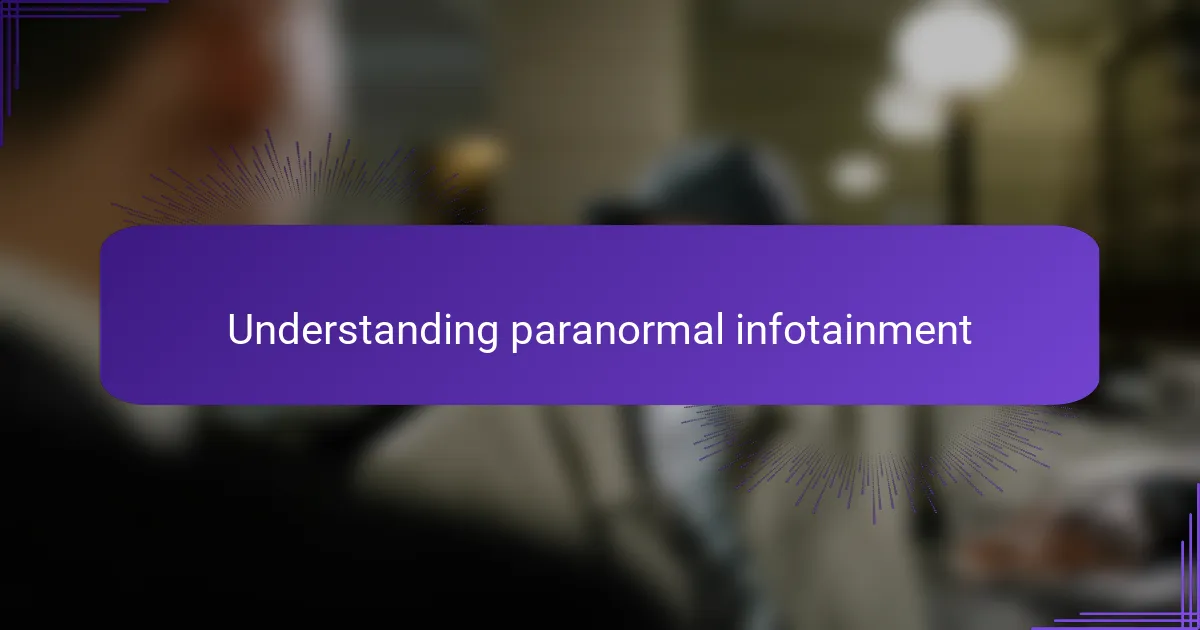
Understanding Paranormal Infotainment
Paranormal infotainment blends facts with mystery, creating stories that spark curiosity and wonder. I often find myself torn between skepticism and fascination, asking: Could there be more to these tales than mere fiction?
What intrigues me most is how this genre invites us to question reality without demanding belief. It’s like standing on the edge of the unknown, peering in with both caution and excitement. Have you ever felt that thrill of chasing something just out of reach?
From my experience, paranormal infotainment isn’t just about ghost stories or legends—it’s about the human desire to explore the unexplained. It taps into our imagination and emotions, making the unknown feel a little more personal, and somehow, a bit more real.
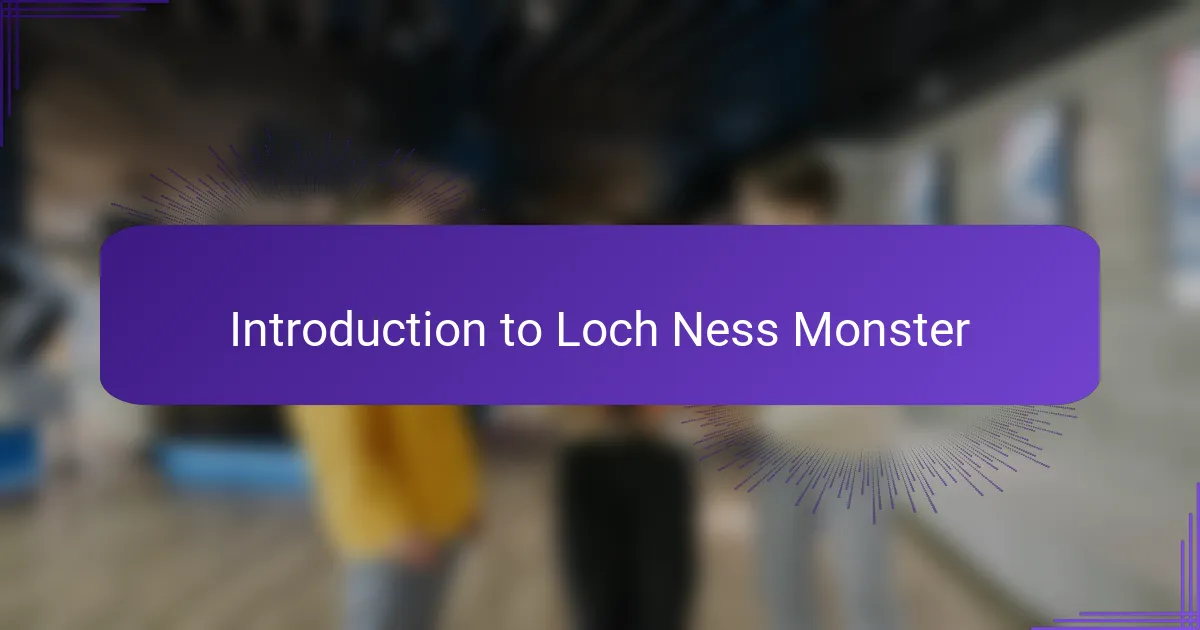
Introduction to Loch Ness Monster
The Loch Ness Monster, affectionately known as “Nessie,” has fascinated me since childhood. I remember hearing tales of a mysterious creature lurking in the depths of Loch Ness, Scotland, and feeling a mix of excitement and doubt. What is it about this elusive being that captures our imagination so deeply?
Nessie’s story isn’t just a myth; it’s woven into the cultural fabric of the region, sparking countless sightings and investigations. I often wonder how much of what we see is shaped by hope and how much might be hidden truths. Have you ever stared into the water and wished to glimpse something extraordinary?
From my experience exploring these legends, the Loch Ness Monster represents more than a cryptid—it symbolizes our yearning to believe in mysteries beyond our understanding. It’s tempting to dismiss it as folklore, yet part of me wants to think there’s something real beneath the surface, waiting to be discovered.
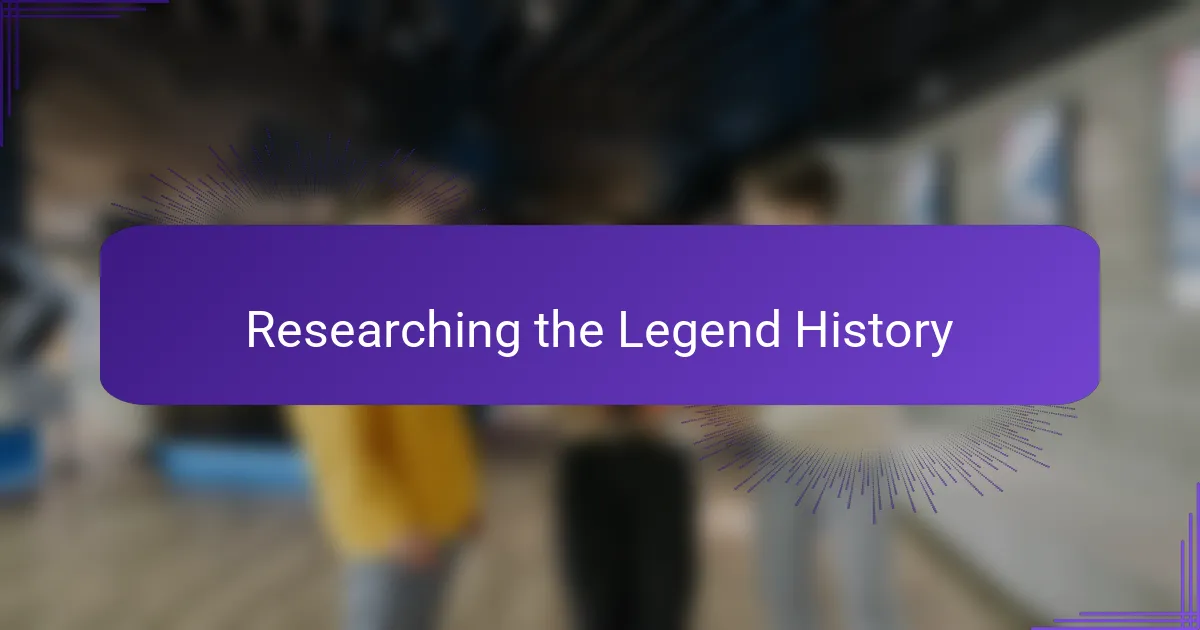
Researching the Legend History
Diving into the history behind the Loch Ness Monster, I quickly realized this legend is far from a recent invention. Reports of strange creatures in Loch Ness date back to ancient times, with early mentions appearing in Scottish folklore and medieval chronicles. It made me wonder—how did these early tales shape what we now see as Nessie’s vivid image?
As I sifted through old manuscripts and local stories, I noticed how each generation added its own layers to the myth. Was it imagination, exaggeration, or perhaps a collective yearning for something magical? I found myself reflecting on how legends grow, fueled by human curiosity and the deep desire to explain the unexplainable.
What struck me most was how Nessie’s presence has evolved alongside Scotland’s culture and tourism. From my experience, this connection between legend and local identity adds a fascinating twist—Nessie isn’t just a monster; she’s a symbol, a story people hold onto in hope and wonder. Don’t you think stories like these tell us as much about ourselves as they do about the mysteries we chase?
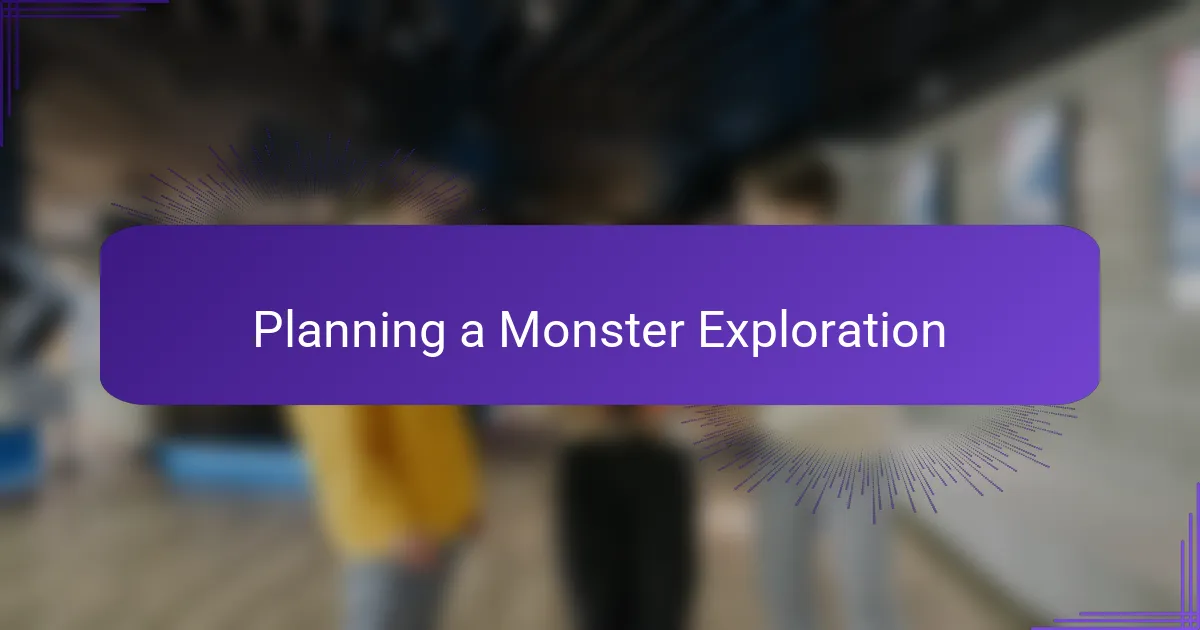
Planning a Monster Exploration
Planning an exploration into the unknown, like the search for Nessie, demands more than just enthusiasm—it requires careful preparation. I remember sitting down with maps, weather reports, and reading local accounts to decide the best times and spots to venture out on the loch. Have you ever felt the mix of excitement and nerves that comes with stepping into an environment where anything might happen?
Choosing the right equipment was another challenge. From underwater cameras to night-vision goggles, I had to balance having the latest gear with what was actually practical for a long day on the water. In hindsight, picking tools that matched the environment made all the difference in staying ready for unexpected moments.
Beyond the technical side, there’s something deeply personal about setting intentions before an exploration like this. I asked myself: Am I chasing a legend, seeking evidence, or simply craving an adventure? This reflection guided how I approached the whole journey, making it not just a quest for a monster, but a search for meaning in the mystery.
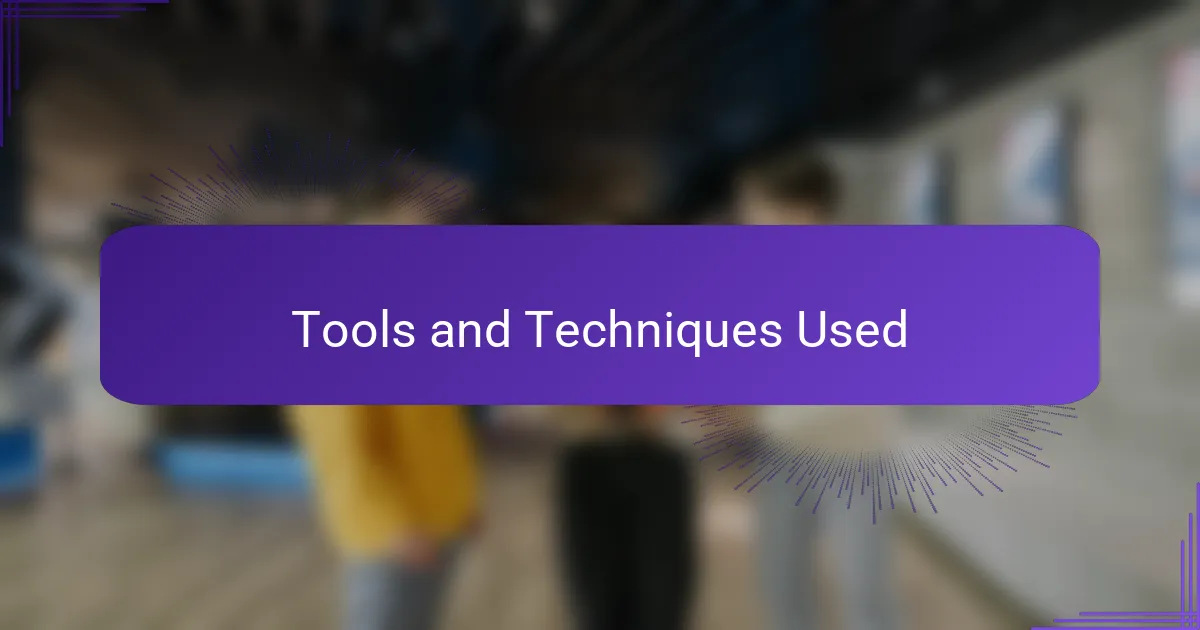
Tools and Techniques Used
I relied heavily on a combination of tried-and-true tools and some modern gadgets to navigate the murky depths of Loch Ness. Sonar equipment was indispensable—its ability to send sound waves and interpret their echoes gave me an edge in scanning the vast underwater expanse where Nessie might hide. Have you ever felt that thrill when technology reveals what the [censured] eye cannot?
To complement the sonar, I carried underwater cameras with night-vision capability, hoping to capture any elusive movement beneath the surface. Holding those cameras in my hands, I felt a pulse of anticipation, wondering if they would record the unexpected or just the quiet calm of the loch. It’s funny how equipment can both empower and humble you, reminding you that nature keeps its secrets well.
My techniques weren’t only about gadgets; patience and timing played a crucial role. I spent hours observing patterns of waves, sunlight reflections, and even the behavior of local wildlife. Have you noticed how sometimes the smallest sign—a ripple, a shadow—can ignite the imagination and fuel the hope that just maybe, something extraordinary is nearby?
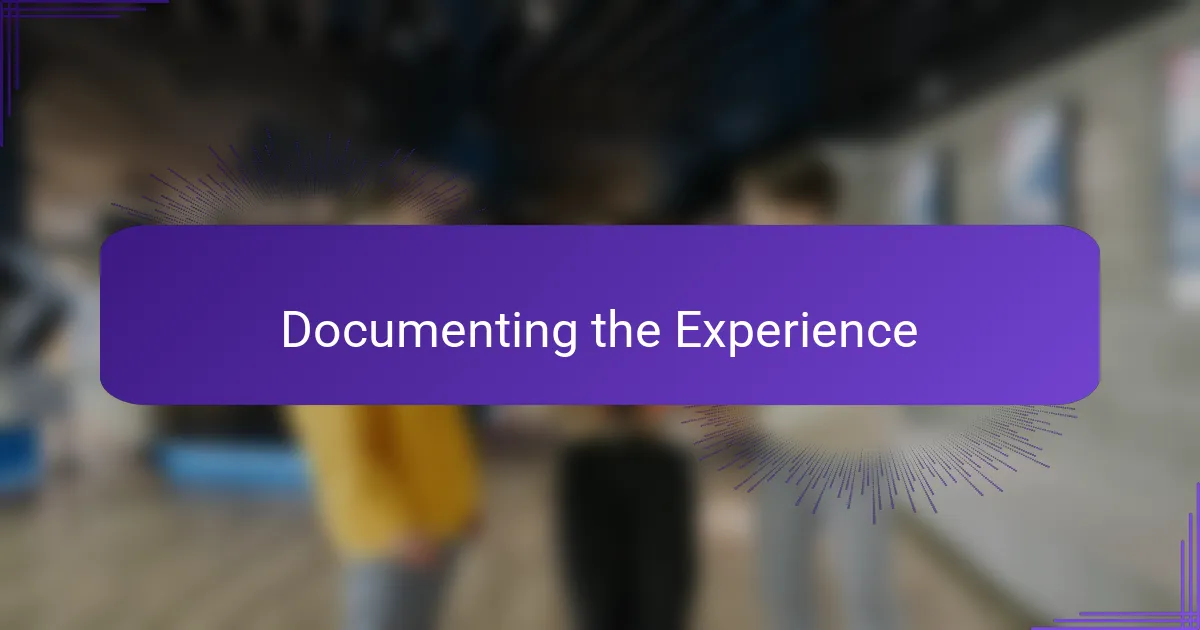
Documenting the Experience
Documenting the Experience was both exhilarating and humbling. I kept a meticulous journal, noting every glimpse, shadow, and ripple on the water, even when nothing extraordinary appeared. Have you ever found that sometimes the smallest details carry the biggest stories? For me, those subtle observations became as thrilling as any monster sighting.
I also captured countless photos and videos, knowing that each frame could hold a secret moment frozen in time. There was one evening when the fading light danced across the surface just right, and my camera caught an unexplainable shape lurking beneath—it made my heart race. Reviewing that footage later, I wondered: Was this evidence, or just a trick of the light crafted by my own hopeful mind?
Sharing these findings felt like opening a window into my personal journey with Nessie. I thought deeply about how to balance skepticism with wonder in my notes and storytelling, striving to be honest yet open to mystery. Isn’t that the essence of exploring the paranormal—to walk the line between what we know and what we dream?
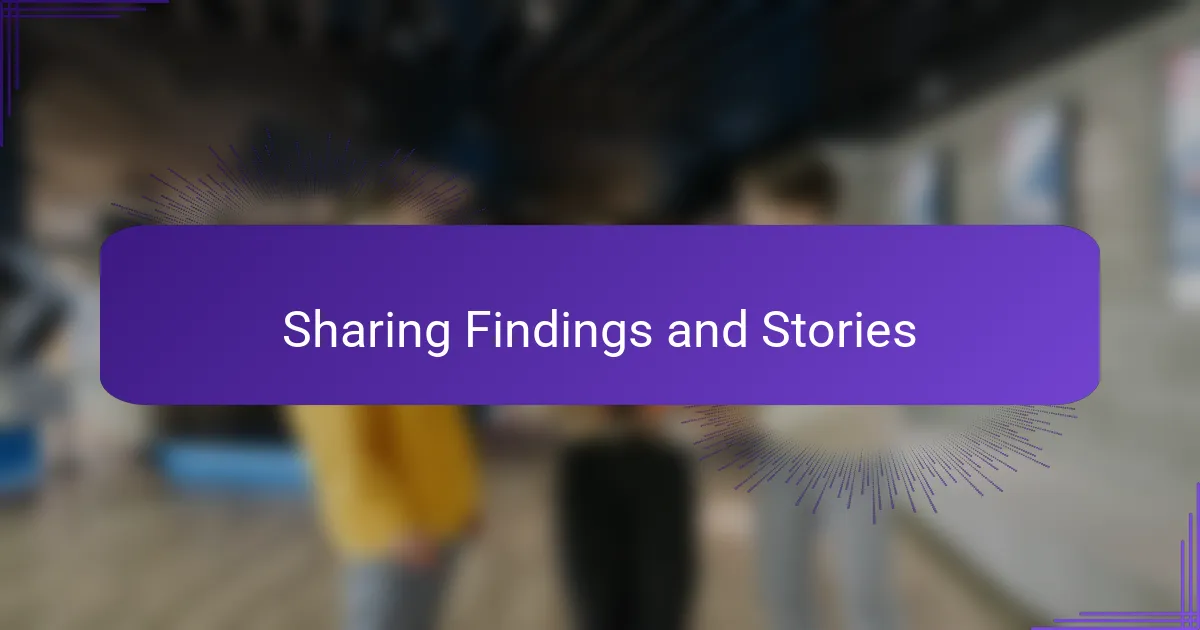
Sharing Findings and Stories
Sharing my findings and stories felt like unveiling a secret I’d carried close throughout the journey. I remember sitting with friends, showing them the photos and recordings, and watching their eyes widen with a mix of curiosity and doubt. Have you ever experienced that moment when your own story sparks fresh intrigue and debate among others?
More than just data, these stories became pieces of a larger puzzle—each ripple, each shadow inviting new interpretations and questions. I often wondered: How much of what I saw was shaped by my own hopes? And how do you convey the thrill of possibility without tipping into fantasy?
Opening up about my exploration also meant embracing vulnerability. Sharing the uncertainties, the near misses, and the moments of pure wonder made the whole experience feel more real—and connected me with others who also chase the unknown. Isn’t that what storytelling is all about, after all?